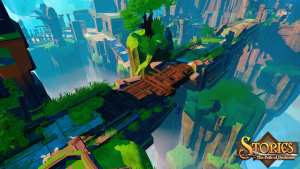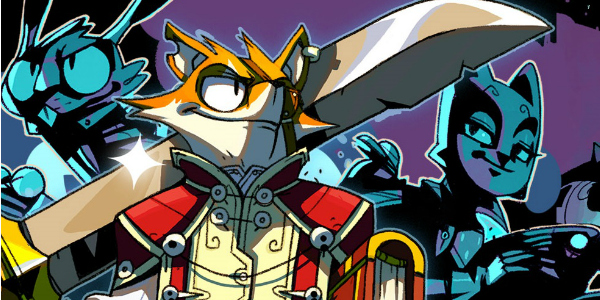The first time I was immensely aware that books didn’t just magically appear on rickety sheet metal school shelves – that they had to be drafted, edited numerous times, published, printed en masse, distributed, etc. – was during my love affair with choose your own adventure books. I didn’t recognize that the majority of the books I was reading came from the same publishing company and had, for the most part, been written by the same man (R.A. Montgomery), but that signature red title bar was unmistakable. When fording the choppy seas of D.E.A.R. prompts, the scarlet trademark was a familiar lighthouse, always guiding me back home.
The stories were mostly pulpy, low-bar adventure/mystery/horror stories that were compelling, if not incredibly challenging to read or interpret. Analysis was never the point of these books, though, it was the interactivity. Every so often, after meeting a character or entering a room, I was prompted to do something. Who killed Harlowe Thrombey? I don’t know, but I’m gonna flip to page 76 and find the hell out! Or the bad guy is going to get the jump on me and kill me. Whoops.
Before I (or anyone, really) accepted the truth that videogames are the most evocative art mediums of our time, Montgomery was inventing the modern adventure game. Making readers responsible for the outcome of an overarching narrative also made them curious about how such a web can be woven in the first place. Im hardly the first person to skip straight to a book’s many endings and work backwards towards the beginning, in hopes to dissect the process. Sometimes, I am nostalgic to return to such experiences and re-evaluate my feelings for them now that I’m significantly less bright and imaginative. Thank god Spearhead Games stepped in and gave us Stories: The Path of Destinies, now I don’t have to crack open a book like a nerd.
When Reynardo, fox-faced rapscallion and agent of The Rebellion, watches his master plan go awry the first time, he and I share a similar epiphany – things are about to get weird. We found a super weapon, the Core, an armature to house it, and a great many Imperials to use it on. When warned that it could come at some grave consequence, we shrugged off the concern as a small sample of a greater set of probabilities. And when reality was sucked into itself, we shrugged incredulously.
But Reynardo wasn’t dead. Instead he woke up on the precipice of what would be his first of several major decisions that led us down that previous road. We knew what The Core could do, and used this failure-born knowledge to make a better, reality-ending weapon-free decision. Just like an R.A. Montgomery joint, Stories makes the player put their fates squarely into their own hands every so often, knowing that calamity is most likely at the end of the road. And just like your favorite “create your own adventure” book, you become better and better at finding victory thanks to your accumulating defeats.
You make your big choices at the end of each of five chapters, and they usually call for going to a smattering of locations for varying motivations. Save an old friend, chase an ancient artifact, but know that you can’t do both, and that “someone will remember that.” These make up the the bulk of the triggers that decide the fate of Reynardo and his supporting cast, and they intertwine and overlap so much that the sheer amount of possible outcomes is somewhat dizzying. To be fair, though, most of these outcomes are just slightly altered versions of a set list of big concepts, stemming from four major subplots that occur and reoccur through your time with the game.

Each playthrough gets shorter and shorter as you go on. Not because you travel any less distance, but you’ll be hacking and slashing through the same jungles, ruins, deserts, and villages over and over again. You begin to remember the maps intimately, gain access to the shortcuts and secrets guarded by magical doors, and accumulate Reynardo’s power through your standard ARPG skill tree adjace so that the scarce amount of enemy types become less and less threatening over time.
As it doesn’t save the game from the significant numbing effect of this repetition, the moment to moment narration of Julian Casey (We Happy Few) is so well written and delightful, I almost attribute all of my post “true ending” playthroughs to my want to hear what he has to say next. The music and art join this voice work to create a classic, childhood storybook effect that feels like it could be enjoyed both by school children and bitter old men who used to be.
But like most childhood stories, Stories’s content is base and rudimentary, and its hard to stay riveted to see every story to their many possible ends. You out level the minuscule challenge that the shallow combat provides at a blistering pace. The meandering paths of each level are few, becoming well-worn territory all too quickly. An inevitability, what with the core concept of this game and all. But being an immutable factor doesn’t save it from also being a great disappointment.
But to think that Stories: The Path of Destinies will be glossed over by the public at large – it’s an indie dungeon crawler that had the audacity to be released just months after it’s launch for freeto PS+ subscribers, after all – is a shame worth crying over. We beg for stories in games to get better, and they don’t because we expect them to operate as movies do. Stories proves that telling great, er, stories could really mean just emulating the paper and ink variety.






